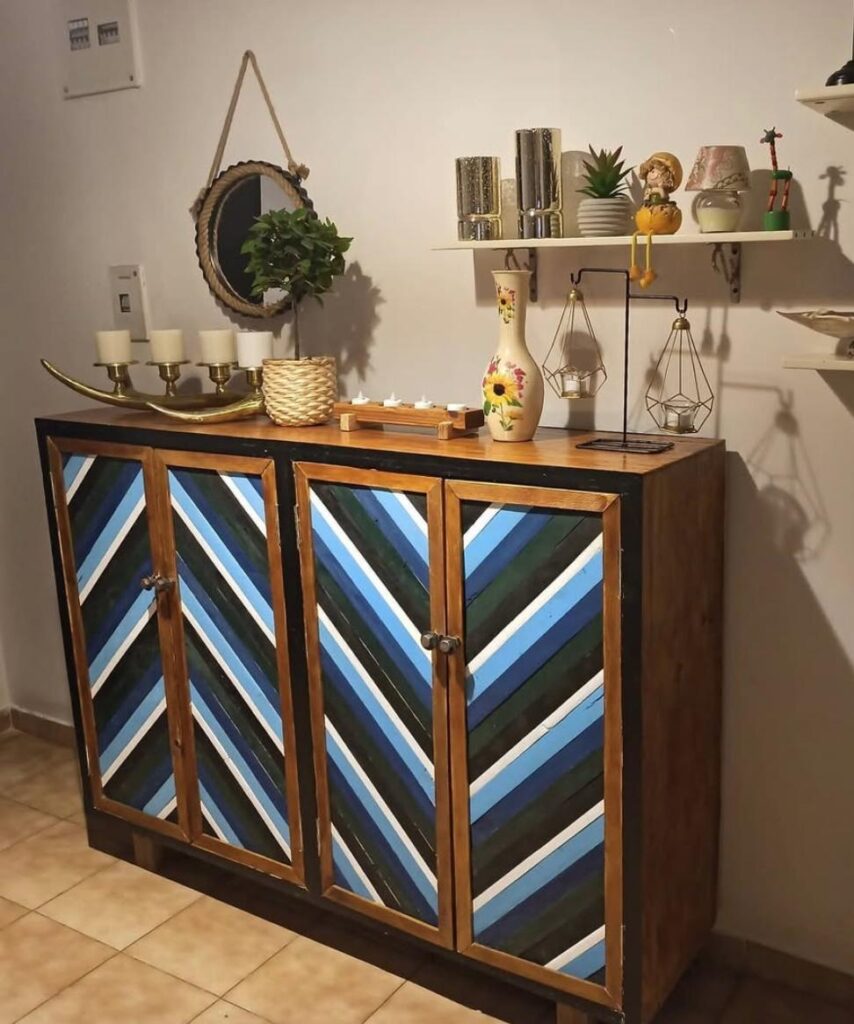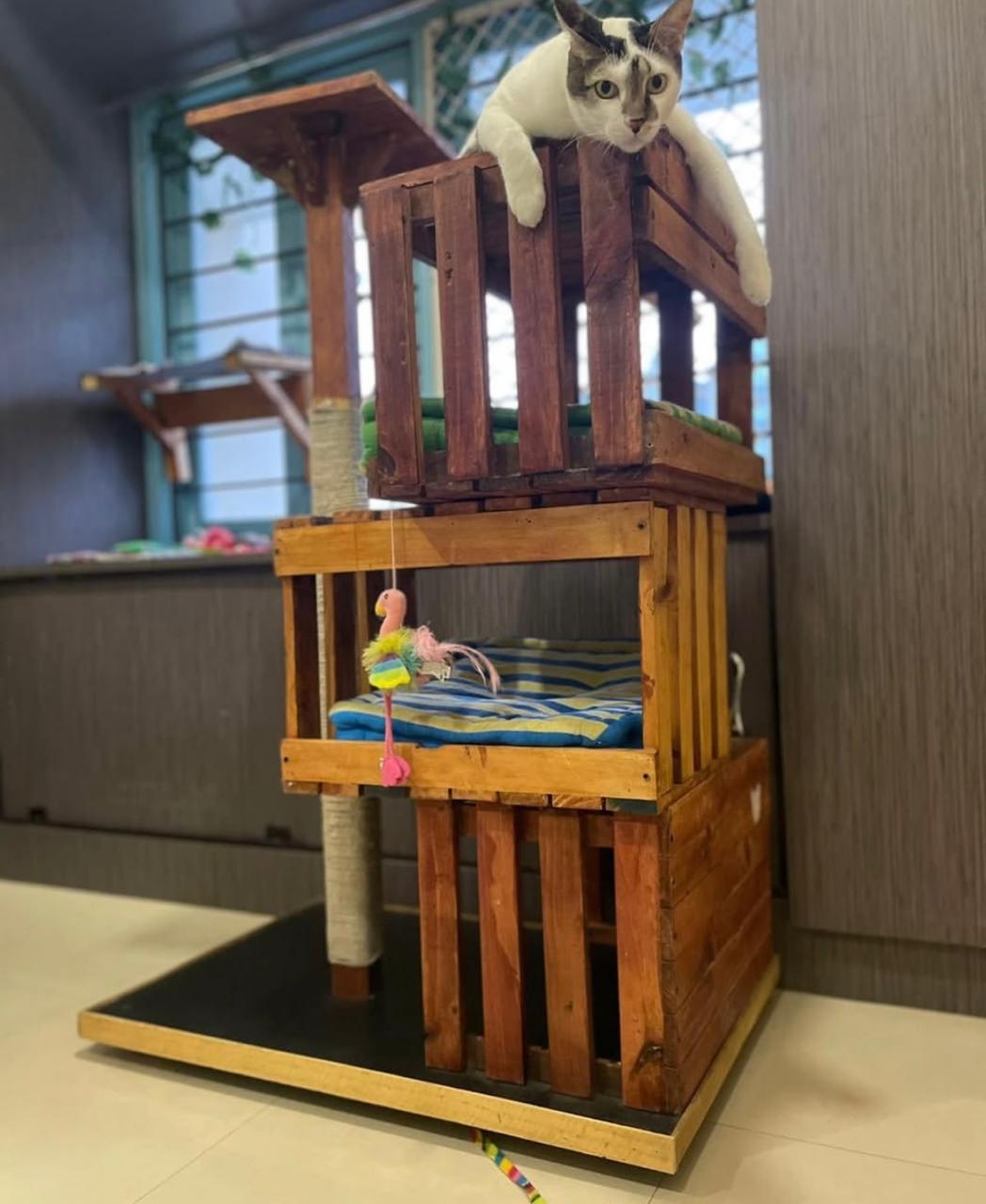From wooden pieces built with memory and meaning to smart storage solutions designed around lifestyle, individuality is now at the heart of every corner. The Pioneer brings you stories of creators and designers who are shaping homes that speak—one thoughtful detail at a time
Needhi Gattani
Personalisation is no longer a luxury—it’s an expectation. From one-of-a-kind wooden furniture that tells a story, to clever storage ideas tailored to fit lives, homes are becoming more expressive than ever before. Behind this shift are makers who treat every piece not just as a product, but as a conversation—between design, memory, and the person it’s made for. The Pioneer meets the minds turning wood, space, and imagination into something deeply personal.
For Kabir Sheikh, founder, The Woodsman store, his journey began as a hobby: “Growing up, my neighbour was a carpenter. He would work, and I’d go around him, sometimes helping with small tasks. He gave me a couple of tools to start with and told me, over time, I’d have enough tools and space to store them all. Seeing him working, I began making things myself,” he recalls. Years later, a colleague noticed one of his projects and asked if he could build a dining table. “That felt like a huge milestone. I designed a farmhouse table made of scrap pine wood. It was sturdy and turned out well. I was genuinely surprised I could pull it off.”
Today, his work ranges from coffee tables built from reclaimed wood to intricate wall art made with deep personal meaning. One such piece, connecting a father and his child. “I made a piece of wall art a while ago, about four by two feet. The client wanted something that connected the father and the children. I found out their star signs: Cancer and Virgo. I designed mountain backgrounds with Virgo constellations and some Cancer symbols, with a moon and shooting stars at the top. It turned out well and was a lovely piece. I told the client I almost didn’t,” he shares.
Pine remains his preferred material for its flowing grain patterns and warm tones, “Pine usually has these patterns on it, like waves, and makes some nice designs. I’ll try to choose pine when I go to a shop; there are different types. Some have straight grains and no patterns. I also make sure that grains or patterns align well, like a flowing river, so they seem connected. The more you sand and finish it, the more the colours come out. When I start applying colours, those grains immediately show, which is satisfying,” he shares.

While he tries to adapt the design language to diverse styles, he believes working with wood is so diverse that you can do so many things. You can make almost anything you see. That’s what he loves about it. But the scariest part? “The scariest part was making a chair; I was worried it might break when someone sat on it (he laughs) But over time, I learned to cater to what people like. I focus on designs that are functional and appealing, pieces that everyone can imagine using.”
Almost all his orders now come through Instagram, a platform that lets clients see his work evolve and connect directly with the maker. “I think since the very beginning, everything I have created up until today, except for the first dining table, 99% of my products, I got orders for through Instagram. I start,” he shares.
For him, the appeal of personalised furniture is simple: it’s about a story. “When people contact small businesses, they get a story behind the maker, see how they’re building things, and often get more customisable options, where you can express what you need rather than choosing from pre-made features. By reaching out to people like me, clients can work on their designs; they can say, “Hey, this is what I want. Can you do that?” And yes, that’s doable. This approach fosters a closer connection to small businesses. Plus, seeing the process along the timeline strengthens that bond,” he shares.
Meanwhile, Interior designers are witnessing a similar shift. Nidhi Maniyar, Interior designer, Co-founder of Nuenze shares, “These days, everyone wants a lot of storage. It has become a key concern, which makes the design process quite complex. We need to incorporate smart storage options, which take time to explain and persuade clients about. We start by noting down all their preferences and needs, then offer suitable ideas, including mood boards. Once we understand what they want, we suggest hidden storage solutions and smart furniture, balancing aesthetics with functionality,” she explains.
It has now become important to balance the client’s vision with functional and aesthetic considerations while creating personalised interiors, “The client has a vision. We record all their preferences, what they want their space to look like, and the feelings they want to evoke, such as warmth. Then, we consider their budget. Our design phase is based not only on their references but also on factors like lighting, materials, and financial limits. They want their space to be both functional and attractive, but also budget-friendly,” she shares.
Challenges inevitably arise, especially with budgets. “Clients desire luxury. They want that luxurious look and aesthetic functionality, but on a fixed budget. So, we must balance the budget with the client’s needs. Then, there are expensive materials. We often need to find dupes to match the budget. Smart lighting is another challenge. With so many types of lighting, selecting the right one according to the client’s preferences is difficult. Clients may choose one option today, and then change their mind after a few days. Providing maximum satisfaction to clients is our biggest challenge. Ultimately, everything must align with what the client wants. Convincing them is the main difficulty,” she says.
Cultural identity and lifestyle are playing a bigger role than ever in how spaces are being designed. “Knowing a client’s preferences and style is crucial because lifestyle determines the functionality of the space,” explains Nidhi. She believes that design today goes beyond aesthetics—it taps into beliefs and values. “People want to preserve and pass on traditions, integrating them into their homes. If we don’t consider their lifestyle and background, the space becomes just a waste.”
This personalised approach also extends to materials, colour palettes, and design elements. “Right now, everyone prefers neutral tones. Bold colours are rarely used across large areas—they’re more commonly seen in artwork,” she shares. “We usually work with a neutral base and add colour through art to create balance. Wood remains a top choice for many, thanks to the warmth it brings, though we suggest alternatives like veneer instead of laminate based on budget. Lighting is just as important—whether it’s mood lighting, natural light, or standard fixtures, it all depends on the space and what the client wants.”
| ReplyForwardAdd reaction |




